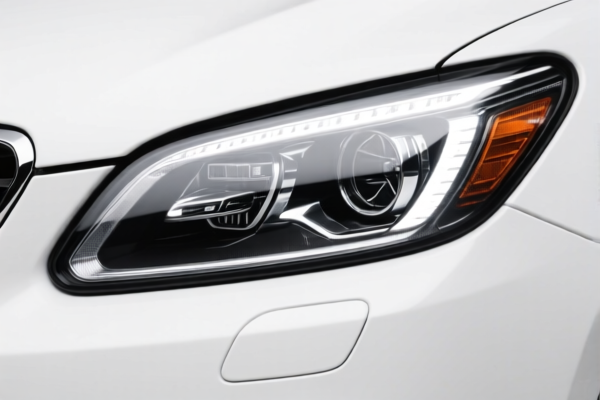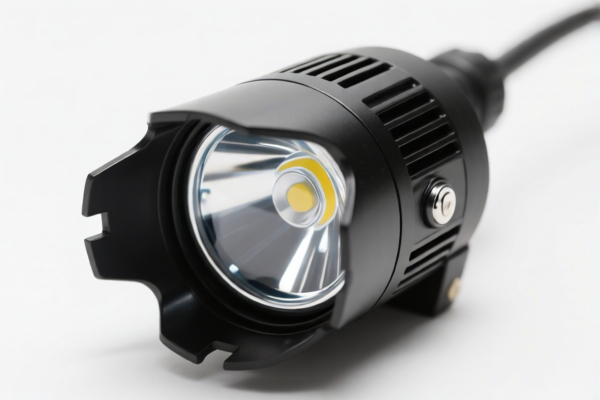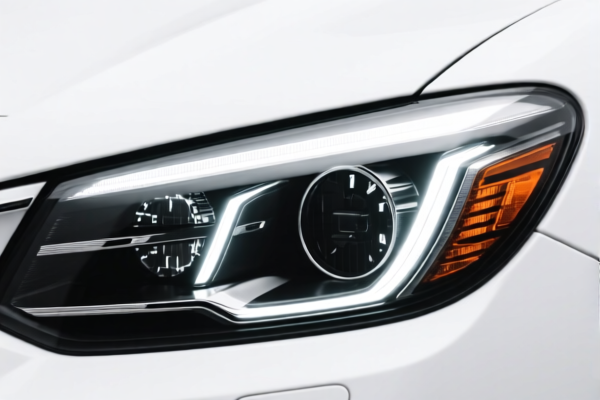| HS Code | Official Doc | Tariff Rate | Origin | Destination | Effective Date |
|---|---|---|---|---|---|
| 8310000000 | Doc | 55.0% | CN | US | 2025-05-12 |
| 9405416000 | Doc | 61.0% | CN | US | 2025-05-12 |
| 9405418410 | Doc | 58.9% | CN | US | 2025-05-12 |
| 8512902000 | Doc | 57.5% | CN | US | 2025-05-12 |
| 8512906000 | Doc | 55.0% | CN | US | 2025-05-12 |
| 8543708000 | Doc | 55.0% | CN | US | 2025-05-12 |
| 8543906800 | Doc | 55.0% | CN | US | 2025-05-12 |
| 8539293050 | Doc | 37.5% | CN | US | 2025-05-12 |
| 8539520091 | Doc | 32.0% | CN | US | 2025-05-12 |
| 8531809051 | Doc | 37.5% | CN | US | 2025-05-12 |
| 8531809005 | Doc | 37.5% | CN | US | 2025-05-12 |
| 9101912000 | Doc | 37.5% | CN | US | 2025-05-12 |




Head Torch
A head torch, also known as a headlamp, is a portable hands-free lighting device worn on the head. It consists of a light source, typically an LED, mounted on a strap or band that encircles the head.
Material
- Housing: Commonly constructed from durable plastics like ABS, polycarbonate, or aluminum alloys for impact resistance and weather protection.
- Strap: Usually made from elastic nylon or polyester webbing, often adjustable for a comfortable and secure fit.
- Light Source: Predominantly utilizes Light Emitting Diodes (LEDs) due to their efficiency, longevity, and compact size.
- Lens: Typically polycarbonate or acrylic for clarity and impact resistance.
- Battery Housing: Plastic or metal, designed to securely hold batteries and provide water resistance.
Purpose
The primary purpose of a head torch is to provide illumination while allowing the user to maintain hands-free operation. This is crucial in situations where both hands are needed for tasks or navigation.
Function
Head torches function by emitting light from LEDs powered by batteries. Key functional elements include:
- Switching Modes: Many models offer multiple light modes, including high, medium, low, strobe, and sometimes specialized modes like red light for preserving night vision.
- Beam Adjustment: Adjustable beam angles allow users to focus light for close-up tasks or long-distance visibility.
- Water Resistance: Most head torches are at least splash-resistant, with higher-end models offering full waterproofing.
- Battery Indicator: Some models include indicators to display remaining battery life.
Usage Scenarios
Head torches are utilized in a wide range of activities, including:
- Hiking & Camping: For navigating trails, setting up camp, and general nighttime visibility.
- Caving & Spelunking: Essential for exploring underground environments.
- Climbing: Providing focused light for ascent and descent.
- Running & Trail Running: Enhancing visibility and safety during low-light conditions.
- Cycling: Mounting on helmets for increased visibility on roads or trails.
- Emergency Preparedness: Useful during power outages or other emergency situations.
- DIY & Repair Work: Providing hands-free illumination for detailed tasks.
- Fishing & Hunting: Allowing for hands-free operation while maintaining visibility.
Common Types
- Standard Head Torches: General-purpose models suitable for a variety of activities.
- Rechargeable Head Torches: Utilize rechargeable batteries, often via USB, reducing the need for disposable batteries.
- High-Lumen Head Torches: Designed for applications requiring high brightness, such as caving or search and rescue.
- Waterproof Head Torches: Specifically designed for use in wet conditions, often with higher IP ratings.
- Ultralight Head Torches: Prioritize minimal weight for activities like backpacking and trail running.
- Tactical Head Torches: Often feature durable construction, high brightness, and specialized modes for law enforcement or military applications.
- Forehead Head Torches: Designed for close-up work, often used by mechanics or repair technicians.
Based on the provided information, a head torch is a portable lighting device designed to be worn on the head, providing hands-free illumination. It typically consists of a light source (LED is common), a battery pack, and a strap or band to secure it to the head. Common applications include camping, hiking, caving, and industrial work where a direct light source is needed.
The following HS codes may be relevant:
- 8513.10.0000: Portable electric lamps, functioning solely on electric power, excluding those of heading 85.12; portable searchlights; lamps for cycles or motor vehicles; portable lighting sets. This code specifically includes portable electric lamps functioning solely on electric power, which directly applies to head torches powered by batteries.
- 85: Electrical machinery and equipment and parts thereof; sound recording or reproducing apparatus, television-image multiplier tubes, klystrons, magnetrons and like tubes.
- 13: Electrical lamps and lighting fittings.
- 10: Portable electric lamps, functioning solely on electric power, excluding those of heading 85.12; portable searchlights; lamps for cycles or motor vehicles; portable lighting sets.
- 8513.90.0000: Other lighting fittings. This code covers other lighting fittings not specifically classified elsewhere in heading 85.13. If the head torch has unique features or is part of a larger system, it might fall under this category.
- 85: Electrical machinery and equipment and parts thereof; sound recording or reproducing apparatus, television-image multiplier tubes, klystrons, magnetrons and like tubes.
- 13: Electrical lamps and lighting fittings.
- 90: Other lighting fittings.
- 3926.90.9000: Other articles of plastic. This code could apply if the head torch housing and components are primarily made of plastic.
- 39: Plastics and articles thereof.
- 26: Other articles of plastic.
- 90: Other articles of plastic.
Regarding HS code 8513.10.0000, it is important to note that this code specifically excludes lamps of heading 85.12. Therefore, ensure the head torch does not fall under the scope of heading 85.12 (lamps with discharge lamps).
Customer Reviews
No reviews yet.